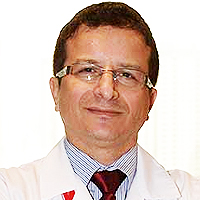Understanding Burnout Rates for Clinicians and Physical Symptoms of Allostatic Load
Published on: 7th January, 2025
Burnout among clinicians is a pressing concern worldwide, manifesting as emotional exhaustion, depersonalization, and reduced professional efficacy. This article explores the intersection of burnout and allostatic load, the physiological burden resulting from chronic stress, to elucidate the consequences for healthcare providers. Burnout impacts clinicians’ mental and physical health, leading to compromised patient care, reduced job satisfaction, and increased attrition rates. A comparative analysis of recent scholarly works reveals converging evidence on systemic contributors such as excessive workloads, inadequate support systems, and organizational inefficiencies, further compounded by individual vulnerabilities like lack of resilience. These challenges have been exacerbated by the COVID-19 pandemic, which has significantly increased stress levels among healthcare professionals globally. This article synthesizes insights from studies conducted between 2020 and 2024, emphasizing the need for holistic approaches to mitigate burnout. It highlights the physiological underpinnings of allostatic load, including chronic dysregulation of stress-response systems that predispose clinicians to adverse health outcomes like cardiovascular diseases, immune dysfunction, and mental health disorders. To address these issues, the article proposes a multidimensional strategy encompassing organizational reforms, evidence-based interventions, and policy advocacy. Recommendations include reducing administrative burdens, fostering supportive work environments, and integrating wellness programs targeting both systemic and individual stressors. Limitations and directions for future research emphasize the importance of inclusive, longitudinal studies focusing on diverse populations to develop tailored solutions. This comprehensive approach aims to enhance clinician well-being and improve healthcare outcomes globally.
Double-Positive Anti-GBM and ANCA Vasculitis: 2 Case Reports and Review of the Literature
Published on: 21st January, 2025
Double-Positive Patients (DPPs), characterized by the simultaneous presence of Anti-Neutrophil Cytoplasmic Antibody (ANCA) and anti-Glomerular Basement Membrane (anti-GBM) antibodies, represent a rare subset in systemic vasculitis. We present two cases of DPPs with renal involvement and review the existing literature to elucidate the clinical characteristics, histopathological findings, management strategies, and prognostic outcomes associated with this condition. Both cases exhibited renal involvement with rapidly progressive glomerulonephritis, requiring renal replacement therapy. Renal biopsies confirmed crescentic glomerulonephritis with features of both anti-GBM disease and ANCA-associated vasculitis. Management included high-dose glucocorticoids, cyclophosphamide, and consideration of plasma exchanges. Double-positive ANCA and anti-GBM vasculitis pose challenges in management and prognosis. Further research is essential to improve therapeutic strategies for this rare and heterogeneous condition.
Ischemic Stroke and Myocarditis Revealing Behçet’s Disease in a Young Adult: Diagnostic Challenges and Therapeutic Perspectives
Published on: 28th January, 2025
Introduction: Behçet’s disease is a rare, systemic, inflammatory condition that primarily affects young adults. It is characterized by a variety of clinical manifestations. However, neurological and cardiac presentations remain uncommon and often delayed in diagnosis. This disease can lead to severe complications, such as ischemic strokes and myocarditis, highlighting the systemic and complex nature of the condition.Case presentation: A 27-year-old patient was hospitalized after experiencing an ischemic stroke and myocarditis, which revealed Behçet’s disease. He had a history of oral and cutaneous ulcers, without a prior diagnosis of Behçet. Upon admission, brain imaging confirmed an ischemic stroke, and echocardiography and cardiac MRI showed acute myocarditis. Biological tests confirmed elevated systemic inflammation, which guided the treatment plan. The initial treatment included corticosteroids, immunosuppressors (azathioprine), and cardioprotective therapy. The patient showed significant clinical improvements, although mild deficits persist.Discussion: Myocarditis in Behçet’s disease is a rare but severe manifestation resulting from inflammation of the heart walls, often associated with other systemic vascular involvement. Although less common than oral or cutaneous ulcers, myocarditis can lead to acute heart dysfunction and even heart failure if not treated promptly. It is generally caused by an excessive inflammatory response, often associated with immune system activation, which affects the coronary circulation and damages the cardiac muscle. Treatment for myocarditis in this context relies on high-dose corticosteroids to control inflammation, followed by long-term immunosuppressive medications like azathioprine. While the initial treatment often leads to a rapid improvement in cardiac function, the risk of long-term complications, such as dilated cardiomyopathy or heart failure, remains high. Close follow-up is therefore essential to prevent these complications and optimize the long-term cardiac prognosis of patients with this rare disease.Conclusion: The progression of myocarditis in Behçet’s disease can be favorable if diagnosed and treated early, with significant improvement in cardiac function achieved through the use of corticosteroids and immunosuppressive therapy. However, the long-term prognosis remains uncertain due to the risk of chronic cardiac complications, such as dilated cardiomyopathy or heart failure.
The Role of Mitochondria in Chronic Wound Healing (Mitotherapy): Signaling and Therapeutic Implications
Published on: 31st January, 2025
Mitochondria are essential intracellular organelles that significantly influence various cellular processes, including metabolism, stress response, and cell fate. Their precise regulation is crucial for maintaining both organelle and cellular homeostasis. Wound healing is a complex, multifactorial process that relies on the coordinated actions of multiple cell types and numerous cellular mechanisms. Dysregulation in this process can lead to chronic wounds, which pose substantial challenges for healthcare systems and present limited treatment options due to their intricate pathogenesis. Recent research has increasingly focused on the role of mitochondria in wound healing, revealing their involvement in critical processes such as metabolism, apoptosis, and redox signaling. Mitochondrial dynamics play a vital role in wound healing by adapting to cellular demands and environmental cues. Moreover, mitophagy, the selective degradation of damaged mitochondria, is crucial for maintaining mitochondrial integrity and function during the healing process. Mitochondria are not only pivotal in energy production but also in calcium homeostasis and the generation of mitochondrial reactive oxygen species, which are essential for signaling during wound repair. As wound healing progresses through distinct yet overlapping stages mitochondria facilitate the energy demands of repair and contribute to cytoskeletal remodeling necessary for wound closure. Understanding the multifaceted roles of mitochondria in wound healing could lead to novel therapeutic approaches for chronic wounds. Future research should prioritize investigating mitochondrial dynamics and functions in human tissues to develop targeted strategies for enhancing wound healing outcomes.
Exploring the Potential of Medicinal Plants in Bone Marrow Regeneration and Hematopoietic Stem Cell Therapy
Published on: 31st January, 2025
Blood cell production through hematopoiesis within the bone marrow serves both to maintain blood equilibrium and to respond to tissue injury and infectious demands. Hematopoietic stem cell (HSC) therapy developments have revolutionized medical treatment approaches for anemia leukemia and bone marrow failure caused by chemotherapy or radiation exposure. The therapeutic compounds present in medicinal plants have traditionally supported blood health and researchers now understand these plants could help regenerate bone marrow tissue. The analysis investigates how phytochemicals affect HSC proliferation and differentiation while supporting HSC survival. The medicinal plants Panax ginseng, Astragalus membranaceus, and Curcuma longa receive special attention for their documented ability to enhance hematopoiesis in preclinical and clinical settings. This review examines the challenges that include standardization issues, toxicity concerns, and regulatory barriers alongside future perspectives about combining plant-based therapies with traditional treatments to improve bone marrow recovery and health results.
Fostering Pathways and Creativity Responsible for Advancing Health Research Skills and Knowledge for Healthcare Professionals to Heighten Evidence-Based Healthcare Practices in Resource-Constrained Healthcare Settings
Published on: 5th February, 2025
Globally, evidence-based healthcare practices are the most dependable framework for effective healthcare decisions and practices. In all nations, financial resources, people, and time are always insufficient. Healthcare professionals should recommend healthcare interventions that have been proven to be safe, effective, and affordable. All healthcare professionals must be creative to be involved in the creation and compilation of trustworthy evidence to support the decrease in morbidity and mortality of communicable and non-communicable diseases, particularly in developing nations. Regretfully, most developing nations still exhibit weaknesses and barriers to promoting health research and evidence-based healthcare. Evidence indicates that developing countries contribute 1% - 2% of health research activities to address global health problems and challenges. As a result, many individuals in these nations continue to have below-average health conditions. The lack of creativity, innovation, and motivation to gain health research competencies for healthcare professionals causes all these issues. Creativity and innovation are the foundations for the effective implementation of evidence-based healthcare. Surprisingly, no researchers have explored how creativity and innovation heighten evidence-based healthcare practices. The primary objective of this project will be to foster pathways and explore the creativity that advances health research abilities among healthcare professionals to improve evidence-based healthcare practices in resource-limited healthcare settings.
Experience of Anesthesiology Residents in the conduct of their Research during Residency Training at Vicente Sotto Memorial Medical Center
Published on: 26th February, 2025
Introduction: Research provides a framework for Anesthesia residents who are critical thinkers who approach clinical practice with an open mind. The goal of this study was to determine current attitudes regarding performing research during residency as well as perceived obstacles to doing so. A resident physician should be ready to face the challenges of the growing technology, tons of journals published in different portals, and increasing sophistication of the health care delivery system. Practice-based learning, systems-based practices, and medical knowledge are the vital core directly affected by strong research skill set. Methods: The study was done through a survey of all 15 current residents in Vicente Sotto Memorial Medical Center Anesthesia Resident. They answered a 13 self-administered survey, which was adopted from previous similar research. Data was collected for 1 week to give time to the busy schedule of the resident. Results: Respondents cited that the lack of time in balancing clinical and research responsibilities is the most common obstacle encountered by 86.7% of respondents. Researchers feel they have inadequate research skills and a lack of time in balancing responsibilities between family and work was among the most common answers by the respondents. 2nd prevalent barrier to research during residency was a lack of mentoring. Conclusion: The top barriers to research are lack of time and inadequate access to research mentors. These barriers can be addressed to optimize the current research environment for residents. Anesthesia residents identified several critical aspects that they believe are obstacles to research. These findings can be used by programs to overcome hurdles and increase the inclusion of research into residency training.
Regulation of Fear Behavior by Microcircuits within the Mouse Amygdala
Published on: 10th March, 2025
Background: The amygdala is a core structure in the mammalian brain that processes emotion and memory. Its complex neuronal composition and intricate microcircuit mechanisms play key roles in behaviors such as fear, anxiety, and reward. The diversity of neuronal types and the dynamics of these microcircuits provide the neural foundation for the encoding and extinction of fear memories.Aim: This is a retrospective review article summarizing recent research on the amygdala and fear behavior in mice, which is of significant importance in helping people to comprehensively understand and recognize that the amygdala is the core regulator of fear behavior.Methodology: An extensive and systematic search of electronic databases (Medline, PubMed, Web of Science) using keywords related to the amygdala and the technologies involved in the study such as “mouse amygdala,” “basolateral amygdala (BLA),” “central amygdala (CeA),” “fear extinction,” “fear learning,” and “microcircuits.” Articles meeting the selection criteria were included as candidate references.Results: By integrating recent findings from optogenetics, chemogenetics, and single-cell sequencing, this review reveals the interactions between glutamatergic projection neurons and GABAergic interneurons in the amygdala, the functional division between subnuclei, and the neural basis of cross-brain area coordination. Additionally, it discusses the technical challenges in amygdala research and future directions, providing theoretical support for understanding the pathophysiology of emotional disorders.Conclusion: The amygdala is intimately linked to emotional health, playing a critical role in understanding the mechanisms underlying the development of psychiatric disorders such as anxiety, depression, addiction, and post-traumatic stress disorder (PTSD). Despite advances in methodologies such as in vivo calcium imaging, neural circuit tracing, and electrophysiological techniques, which are progressively uncovering the underlying mechanisms of amygdalar regulation of emotional behaviors, the intrinsic microcircuitry of the amygdala remains highly complex. Significant gaps persist, necessitating further exploration and refinement to elucidate unresolved aspects of its functional architecture and behavioral modulation.
Regional Anesthesia Challenges in a Pregnant Patient with VACTERL Association: A Case Report
Published on: 26th March, 2025
VACTERL (V: Vertebral anomalies, A: Anal malformation, C: Cardiac defect, TE: Tracheoesophageal malformation, R: Renal anomalies, L: Limb anomalies) is a cluster of congenital malformations. It is a rare association with sporadic and non-random occurrence where multiple organs are affected due to developmental defect during blastogenesis (2-4 weeks of gestation), where abnormal structures are derived from the embryonic mesoderm. Multiple environmental and genetic factors have been implicated. We report the successful management of a patient with VACTERL association born to a mother through an emergency cesarean section due to fetal distress.
Dengue Epidemic during COVID-19 Pandemic: Clinical and Molecular Characterization – A Study from Western Rajasthan
Published on: 1st April, 2025
The concurrent emergence of dengue fever and the COVID-19 pandemic posed significant challenges to India’s healthcare system, particularly in Western Rajasthan, a region characterized by its arid climate and unique socio-demographic conditions. This study aimed to investigate the clinical and molecular characteristics of dengue during the COVID-19 pandemic, focusing on trends, diagnostic challenges, and serotype distribution. Conducted at Dr. S.N. Medical College, Jodhpur, in 2021, the study included 550 dengue-positive patients confirmed via rapid diagnostic tests and further analyzed using Dengue NS1 antigen and IgM antibody ELISA. Molecular characterization was performed using RT-PCR for serotyping.The results revealed a male predominance (72.36%) and a higher incidence in the 21–30-year age group (39.09%). Urban areas accounted for 67.73% of cases, with significant NS1 and IgM positivity (p = 0.042 and p = 0.004, respectively). Most cases (86.91%) were managed outpatient, though IgM positivity was significantly higher among hospitalized patients (19.19%, p < 0.001), indicating severe or prolonged infections. Platelet counts were above 100,000/mm³ in 86.91% of cases, with only 0.37% showing critically low counts (< 20,000/mm³). Seasonal analysis showed a peak in October (n = 325), correlating with post-monsoon vector breeding. Serotyping identified DENV2 as the dominant strain (97.42%), associated with severe dengue manifestations, including Dengue Haemorrhagic Fever (DHF).The study highlights the dual burden of dengue and COVID-19, emphasizing the need for enhanced vector control, improved diagnostic strategies and public health interventions during overlapping outbreaks. The predominance of DENV2 underscores the importance of serotype-specific surveillance and preparedness to mitigate future dengue epidemics in the region.
Feature Processing Methods: Recent Advances and Future Trends
Published on: 23rd March, 2025
This paper reviews recent advances and future trends in feature processing methods within the field of artificial intelligence. With the rapid development of deep learning and big data technologies, feature processing has become essential for enhancing AI model performance. We begin by revisiting traditional feature processing methods, then focus on deep learning-based feature extraction techniques, automated feature engineering, and the application of feature processing in specific domains. The article also analyzes the current research challenges and outlines future development directions, offering structured insights for both researchers and practitioners across disciplines
Advancing Forensic Approaches to Human Trafficking: The Role of Dental Identification
Published on: 4th April, 2025
Background: Human trafficking is a significant global issue that affects millions of individuals, where victim identification remains a major challenge. Traditional methods such as DNA or fingerprint analysis are not always viable, necessitating alternative forensic approaches.Methods: This article reviews the role of dental identification in human trafficking cases through an extensive analysis of existing literature. The study incorporates forensic odontology techniques, including dental charting, radiographic analysis, bite mark analysis, age estimation, and emerging technologies like Artificial Intelligence (AI).Results: Findings indicate that dental identification methods are essential for victim identification, especially when conventional methods prove ineffective. AI integration enhances the accuracy and efficiency of dental forensic investigations, addressing challenges such as record access and cross-border complexities.Conclusion: Dental identification, augmented by AI advancements, is an indispensable tool in forensic investigations related to human trafficking. The study underscores the necessity of international collaboration and technological innovation to enhance forensic practices.
















